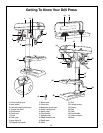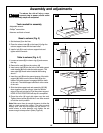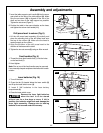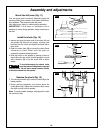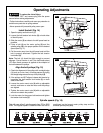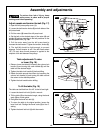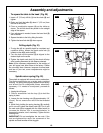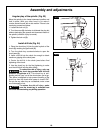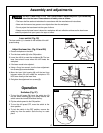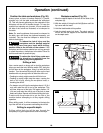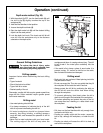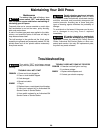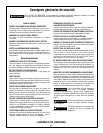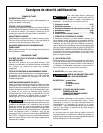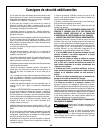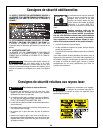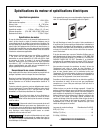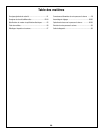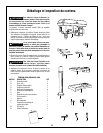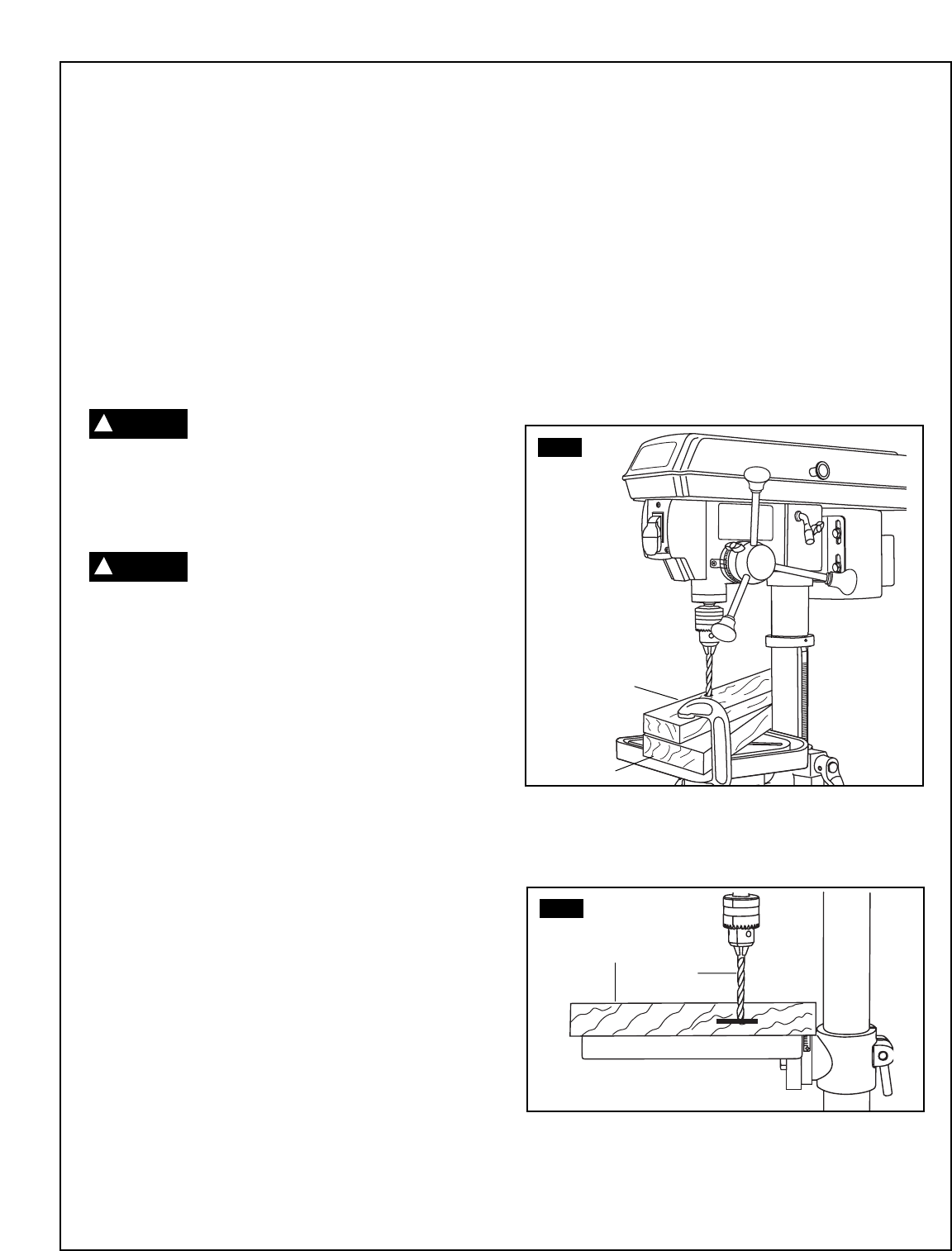
18.
Operation (continued)
Position the table and workpiece (Fig. 28)
Always place a piece of backup material (1) (wood,
p
lywood, etc.) on the table underneath the workpiece
(
2). This will prevent splintering on the underside of the
workpiece as the drill bit breaks through. To keep the
material from spinning out of control, it must contact the
left side of the column as illustrated, or be clamped to
the table.
Note: For small workpieces that cannot be clamped to
the table, use a drill press vise (optional accessory, not
included). The vise must be clamped or bolted to the
table to avoid injury.
To reduce the risk of injury and the
workpiece and the backup material
from being torn from your hand while drilling,
position them to the left side of the column.
If the
workpiece and the backup material are not long enough
to reach the column, clamp them to the table. Failure to
do this could result in personal injury.
To reduce the risk of injury, make sure
the chuck key is removed from the
chuck before starting any drilling operation.
Drilling a hole
Use a center punch or sharp nail to dent the workpiece
where you want the hole. With the switch OFF, bring the
drill bit down to the workpiece, lining it up with the hole
location. Turn the switch ON and pull down on the feed
handles with only enough effort to allow the drill to cut.
• Feeding too slowly might cause the drill bit to burn.
• Feeding to rapidly might stop the motor, causing the
belt or drill to slip, tearing the workpiece loose, or
breaking the drill bit.
• For deeper cuts, drill into the workpiece about 1/4" (6.4
mm) and raise the drill bit out of the workpiece. This
will clear chips out of the hole. Drill again another 1/4"
(6.4 mm) and raise the drill bit out of the hole to clear
debris and chips. Repeat until finished drilling the hole.
Practice with scrap material to get the feel of the
machine before attempting to do any regular drilling
operation.
When drilling metal, it will be necessary to lubricate the
tip of the drill with oil to prevent overheating the drill bit.
Drilling to a specific depth
Drilling a blind hole (not all the way through the
workpiece) to a given depth can be done in two ways.
Workpiece method (Fig. 29)
1. Mark the desired depth of the hole on the side of the
w
orkpiece (
1)
.
2. With the switch off, bring the drill bit (2) down until the
tip is even with the mark.
3. Hold the feed handle at this position.
4. Lock the depth scale lock knob. The chuck and the
drill bit will now be stopped at the distance selected
on the depth scale.
FIG. 28
2
1
2
FIG. 29
1
WARNING
!
WARNING
!



